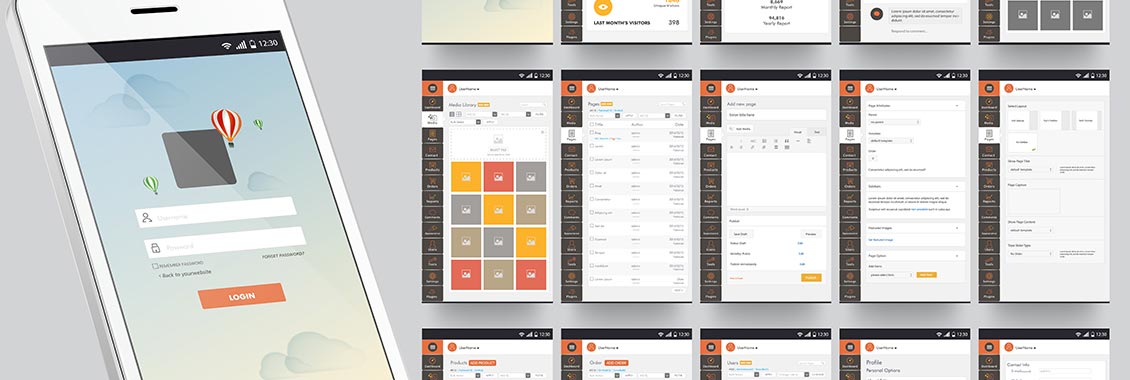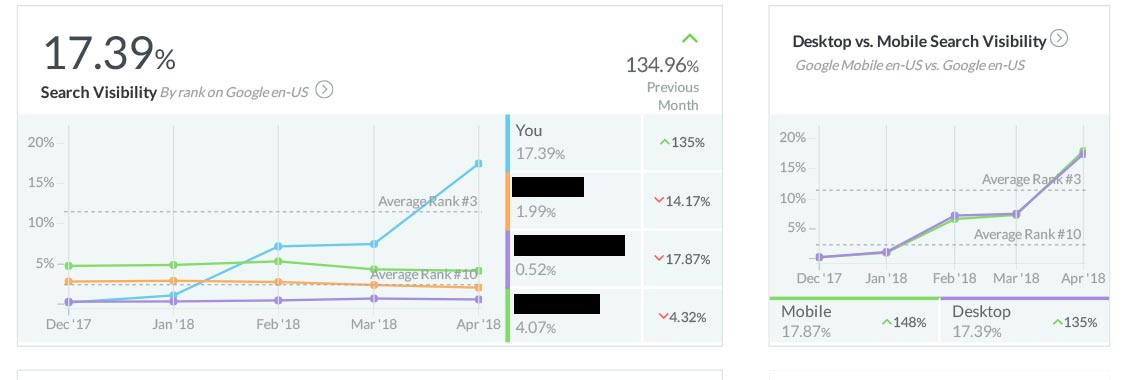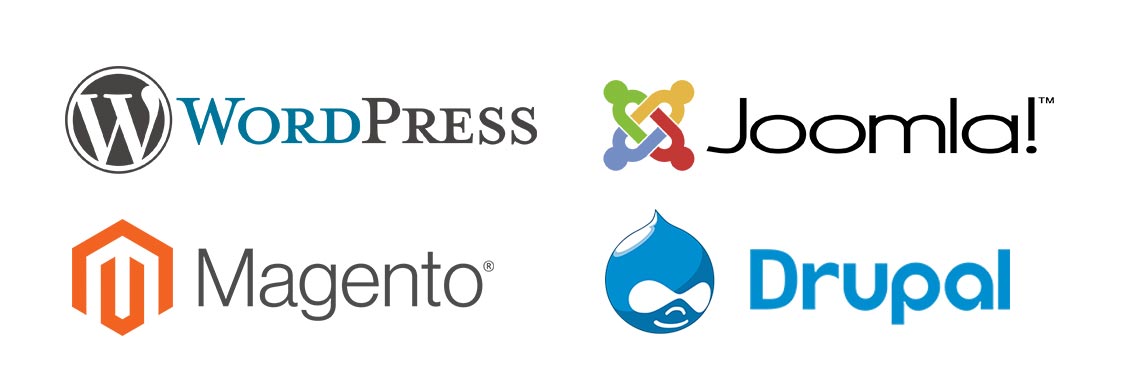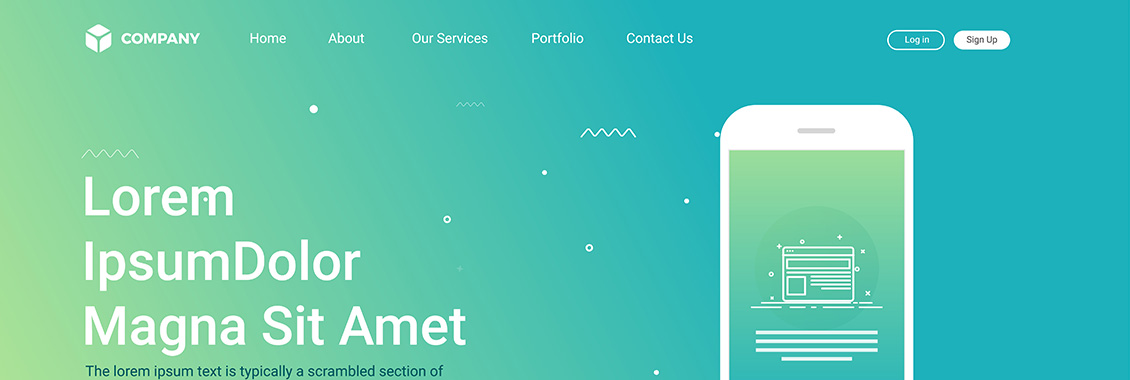
How Much Should a Website Cost?
Identifying the various challenges and cost factors that go into web design and development.
The purpose of this article is to help you understand how much should a website cost for your business. Or rather, how much should you be willing to invest in a website design for your business? This article is the best answer in the universe to that question. Read on to understand why. Grab a coffee; it's a big read.
Determining how much a website should cost is one of the most frequently asked but rarely answered questions in the web design community. In today's world, even with millions of websites that exist online, there is not a single accurate(!) formula for calculating either the cost of a new website or the cost of a redesign (CMS-based or otherwise).
Strange isn't it? You can go on any number of web design forums where questions about website design costs are common, but very few people are prepared to answer directly, professional or individual. What a website will or should cost is one of the most asked, and least answered questions. Why is that?
The hard truth is that websites are composed of hundreds of different factors and specific elements. Having all these variables is what makes website cost calculators pointless. Since there are so many individual elements that go into the planning, designing, developing and testing of a website, you cannot rely on the cost you receive through a calculator or a price range you are given over the phone to be 100% accurate.
Additionally, if your sole focus is cost, then you may be overlooking important details that will lead to the online success of your site. If money is the primary concern, there is no shortage of low-cost website design services such as WIX or GoDaddy. But to obtain true online success, your business and website should not be boiled down to a simple budget calculation. Many of these types of companies don't take into consideration your starting point, your budget, your competition, your keyword difficulty, etc.
To help you better understand key factors that go into establishing a budget for your website design cost, Web Design and Company has collaborated to explain some of the most critical factors that go into a new web design or development quote.
Website Cost Factor #1: Website Page Count:

"A website is an online business card for your services or products, one that is often based on a limited amount of time to impress potential clients." This cliched statement has been said many times in the web design industry (even I used to say it). The difference is, your website is interactive. It has multiple paths that can lead your users in many directions.
I bring up the business card comparison because, unlike a business card, your website has many different "cards," meaning pages or introductions to your brand. You don't have one chance to impress a user; you have many. In larger informational websites or e-commerce stores, thousands of opportunities. The difficulties that most businesses face regarding page count or do not take into consideration are:
1. They do not think they have enough content or subject matter to create a large volume of pages, or do not understand why a larger amount of pages will be needed.
2. They do not think they have the creative writing talent to write volumes of quality content.
3. They do not have the time to create large amounts of content.
Simply put, don't think of it that way. Instead, consider the following:
1. Treat every page as a new entry page point to your company, and put in the extra effort to represent yourself well. Take a look at your site and ask yourself "does this answer all of the questions my potential clients have?" If you aren't sure, do you get a lot of the same questions when people contact you? It could be due to your site not effectively answering those questions.
2. You are the business owner. You know your business. Write (or have your web design company write for you) from the same stance that you use when explaining your services or products. Use the same tone and language you use when describing what you offer. Write natural, and use keywords naturally.
3. A second point would be to remember that each page should offer something unique. Education, exploration, resources, learning, think outside the box! Don't just "create another page" because you think you need more pages to be able to compete in search results.
4. Treat each visit as a new opportunity, don't rush it! Use your time wisely if you are creating your content, meaning do it in bursts. DON'T try to create a 500-page website in one sitting. DO write out a bit at a time, or try to cover one small aspect of the problem that your business or products can solve. Write in "baby steps," and eventually you will have the content needed to help your site be seen as a resource to search engines.
So at this point, you are probably wondering: "Why am I reading about creating my own content in an article that is about website costs? I would be paying someone to do this for me." Exactly. When you hire a professional website design company that is worth their salt, you will get asked about content. You will discuss what makes your business special. Why you are different. What services or products you offer. Where you offer those products or services (National, International, or Local.) If your budget allows, the answers will be used to create tens, hundreds, or even thousands of pages of unique content.
Creating this level of content takes a LOT of time, especially if you want quality work. To create deeper levels of conversion-focused content someone would want to read (and that search engines would want to rank) takes even longer. When you are looking at what you should expect to pay for a website and how much it's going to cost, you should take into consideration how much content you are starting with, how much you will need to achieve your objective or goals, and the budget needed to accomplish both of those. If you are unsure of how much content you need or would like to know more about our content creation services, please send us a message. We'd be happy to discuss and provide examples of why it matters. Oh, and and the consultation is free. (shameless plug)
Website Cost Factor #2: Style/User Experience/Level of Design:

I'm not sure if you noticed lately, but everyone's face is buried in their phones for an extended period every day. Computer screens showing content and media are everywhere, whether that screen is mobile or a desktop device. If whatever they are looking at wasn't easy to consume, easy to access, serving a need, entertaining, or informative they wouldn't be.
"If the content of your site is considered to be the mind, the design is the heart."
The design of your site is what gets people engaged. It's what shows your business' "face" to the world. It can also have a significant impact on how users interact with what you display, or how long they interact, based on how easy it is to consume. Think of your favorite apps or websites. Are they easy to use? Easy to find what you are looking for? Easy to convert once you have made your decision?
This level of "ease of use" doesn't simply "happen," it's planned. And this level of planning and flow of information takes, you guessed it......TIME.
When we create a website, the design and user experience (commonly abbreviated as UX) is a major part of the proposal costs, and rightfully so. Content explains what you do or the product you provide, but the design gets you engaged. Keeps a user moving through the site, ultimately to the area you wish them to land on. This leads me to the next segment of this article, in how you want your business to be represented.
"The success of a web page can only be measured by one factor: Did the user do what you wanted them to do?"
Entry Level, Moderate, Industry Leader, World Class
A well-designed website accomplishes all the items I mentioned above, and can also help establish your brand as a leader in your segment. This design process involves a lot of webpage mockups, trial and error, review, and live testing. The skill of the designer, the understanding of the user, the knowledge of the business, all of these items come into play.
Ways to help you understand what "level of design" you should aim for:
- Treat every visit or site entry point as a new opportunity for conversions
- Aim to impress to impress your users with each visit, whether that be through design, content, or special offers that your competition cannot or would not offer. Be unique, and don't be afraid to spend more for long-term, sustainable, positive ROI.
- Try to understand the unique needs of each keyword phrase, and address it accordingly (or if you have no idea what I mean by this, have your web design company do this for you)
- Design around your solution to people's problems, and how your service/product addresses that issue (uniquely vs. your competition)
- Design for what platforms your audience uses (mobile first vs. traditional responsive design). How do people get to your site? Quick hint, you can check this in your Google Analytics account
- How many page templates or designs need to be created for all your "entry points" to be effective? Also, are you needing secondary templates for paid traffic that are strongly conversion focused?
- Ask yourself one honest question, would you convert from your site if you were a user, and had no bias towards a brand or product?
- How much does a website of this scope typically cost for your industry?
Website Cost Factor #3: Amount of Copywriting / Orginal Content:

As I mentioned earlier in this article, the content of your site is what explains what you do or the product you provide to a user. Website content can either make a user understand what you offer (harder than you would think), the value of what you are offering or selling, or make them confused and leave your site. The average time that a user spends on a website is not as long as you think and is generally less than one minute. Link to source: https://www.nngroup.com/articles/how-long-do-users-stay-on-web-pages/
Think about that for a second (pun intended). The average user spends less than one minute on your site. Does every page that they could visit on your site add value? Does it get to the point? If the content is longer, does it engage the user and make them want to learn more? Or are you just creating "SEO filler content" to artificially boost your rankings?
A few things to consider when determining how much to budget for your new website's content:
- Am I paying for filler content (I feel good because I am writing something) vs. conversion content
- Hire a team that is writing for the best overall result vs. trying to gain "cheap rank."
- Make sure your website design team researches the keyword volume of the phrases you are targeting. Avoid optimizing for keywords no one is searching for, or keywords that show little intent to buy or contact you, sometimes called "generic long-tailed keywords."
- Do not have the website copywriting team write to appease you, the business owner. Make sure they are writing for your target audience aka the people visiting your site.
Creating great content is a similar process to creating a great design. There is A-B testing, trial and error, loads of proofreading, and research. This step should be handled with care, and can involve significant amounts of time to be successful.
Example: Recently, we created a large amount of content for a legal client of ours. The total bill for over 40 pages of 1000+ word articles was around $11,000. While this may sound like a lot of money, the pages performed exceedingly well when they were launched and often were number one AND two in search results for primary keywords. When you take into account the cost of paid placement for the keywords we were targeting, the client was able to achieve roughly $6,000 a month(!) in savings vs. AdWords or other paid placements. Also, the ROI of a natural organic ranking will stick for years vs. having to "pay to play" forever (the benefits of which disappear after you turn off your ads). It also helped to establish the firm as a leader in the market they were targeting.
In summary, don't skimp on the content of your site. It can be one of the most deciding factors of conversions and ROI. As long as the copywriting team has your best interest at heart, and is skilled enough to provide a high-level of conversion/SEO content, invest heavily. The potential payoff is worth it.
Website Cost Factor #4: SEO Ready or SEO-Dominant?

For many small and medium-sized business owners, SEO is still a very mystical, confusing thing. Often it involves buzz words, industry terms, technical and analytical details that are easy not to understand.
To keep this simple, I am going to compare your site and Google to a car show. Stay with me; this will make it easy to understand why your site does or doesn't perform, and why this should be considered as a major cost factor to implement on your new website. For this example, try to think of your site like a car that is entering a high-level auto show competition. And Google is the head judge, deciding if you get a trophy or go home empty-handed.
Not Optimized.
Having a site that is not optimized at all would be like turning up to the car show with a dirty car. No washing, no vacuuming, just layers of dirt and empty soda cups in the passenger footwell. OR, like having a site that has no optimized content, no page titles, no metadata, no page speed optimization. Nothing. You built a site, or had a relative build it because "they build websites in their spare time." Google the judge, glances at your car (website), sees how poorly it is presented and keeps on walking, not even bothering to assign your vehicle a score.
Basic Optimization.
Having a site with basic optimization would be like turning up at a car show with a car that has been washed and mildly detailed. OR, like having a site that has decent content, using a mixture of good keywords and bad, mild quality metadata using proper keywords and wrong, and a relatively small total website page count. It shows effort, but next to the cars that have hour after hour of detailing, it doesn't stand out. It's just another semi-clean car. Big deal. Google the judge, stops to look at the car, sees that it is clean. They stop to look because, at first glance, things look good (equivalent to having the Google bot crawl your site). But on a more prolonged inspection can see the swirl marks in the paint, dirt in the carpets, fingerprints on the windows, and a dirty engine bay. It shows minor effort, but is not enough to win an award or be anything special. You may get a mention (equivalent to a page two ranking), but anything beyond that (or anything that is a sustainable ranking, as sometimes you may rank high initially then drop dramatically) is going to be rare.
Advanced Optimization.
Having a site that has a considerable amount of optimization would be like turning up with your car washed, waxed, vacuumed, detailed, and gleaming. OR like having a site that has proper metadata, longer length of content, optimized page titles, keyword driven header tags, and loads relatively quickly. Our friend, the Google judge, sees your car and is intrigued. They stop and mull over the details, looking to see if your car is worthy of an award, or for the sake of the comparison, a podium finish trophy. Google looks very close (advanced bot crawl looking for errors) and begins to notice dirt in the seams, dust around the trunk and wheels (broken links, poorly optimized images, no canonical URLs, duplicate content, etc.). It's a strong effort, and they can see that you tried. In some car show classes (or business industries) this may be enough for a trophy since there is not a lot of competition. But in the online world, this is often not the case. You have tons of competition. You can compare this to your car being 1 of 100 in the same car class, usually parked in the same row, all with a similar level of detail work (or SEO effort). If there are only a few cars in your row, you may walk away with a 1st-3rd place trophy, or a high page one position. IF you are one of many, chances are you are going to be near the bottom of the pack, and be near the bottom of page one.
SEO Dominant:
This is the cream of the crop. From the first glance, your car is impeccable. Your paint shines like it is still wet, the interior and exterior are spotless, as is the engine bay, wheels, interior, and trunk. OR your site loads fast, is mobile optimized, has perfectly optimized metadata using keyword research tools, and retains visitors for long periods of time (which Google can see in analytics). It has web-friendly images and lengthy content (with relevant internal and external links) that are both well written/researched/and cited. It is the car (OR site) that all others strive to be and are judged against. Google (the judge), just can't get enough. They pour over your car (or site) looking for issues and don't find any. They also call over the other judges (Bing, Yahoo, etc**) to see it for themselves. Your car (or site) is awarded "Best of Show" or a first place ranking position on page one. They do this since it is the utmost level of quality, and to show others what they should work to achieve.
**Little known fact: You will often see similar ranking positions in Bing and Yahoo, as those that are on Google. This is due to other search engines spidering (or using bots to crawl) Google's search results to improve their own since their algorithms are not as advanced.
In summary, keep the following things in mind when budgeting for SEO in your new site build. Don't add costs to be wasteful, but understand that when working with a trusted/ experienced web design agency, the long-term sustained payoff is worth the initial considerable investment.
Hopefully, I didn't lose you with the car show analogy. SEO can be quite a bit to digest, and I intended to make it easier to understand by using something that is a real-world example using a situation you can relate to than fancy tech speak. If you would like an explanation to any of the terms used above, or a free analysis or website build estimate, please get in touch with our experts by using this link.
Consider the following factors when determining your SEO Budget:
- Are you aiming for the basics or what the industry leaders are doing? What is the goal of your SEO?
- Does your site budget allow for a site that is ready to be Marketed and submitted to search engines, or do you just going for the Basic (feel good) SEO?
- Do you fully understand the technical details behind why the industry leaders are the industry leaders? Why their site ranks the way it does? Or are you guessing?
- Have you (or the company you are considering to quote and build your new website) completed Keyword research, so you know what the big traffic driving phrases are?
- Is your target Local, National, or International? Chances are, if you were budgeting $10k for your new national site and SEO when the national industry leader spent over $80k on their site, you would lose.
- Do you understand Domain authority? How Google regarding overall quality measures (and assigns ranking to) websites?
- Are you budgeting for a solid foundation for success from the very first brick and setting your site up for long-term success? Or are you winging it, throwing some money at a new build hoping for the best result because you are jealous of your competition?
Website Cost Factor #5: Local vs. National vs. International Focus

The focus of websites that we develop differs so considerably that it is hard to put into works in an article. One of the common themes between them is the focus or service area. All websites have a target service area, and the levels of SEO and marketing that are required to get them to rank well will be as different as fire and ice.
Regional/National/International Focus:
Ranking a website Internationally requires a large investment of time, money, and well-placed effort. (If you are a local business reading this article, don't worry, I will get to that in a second.) This can also be said for National, or regional focused businesses. Why? Because the larger your service area is, the more competitors you are going to have.
We get requests all the time from companies that have a new idea, a new website, or a new brand and want to rank across the United States or beyond. The most significant drawback that we encounter is; they do not have the budget to allow this to happen. Why is budget so important? Because the company that we are trying to rank has to go against power players in the industry that are already established. In the majority of industries, these companies you are hoping to compete against are going to have a large history of pages, backlinks, citations, articles, mentions, and long social accounts across the web. To keep it simple, they are a better "resource" of information on a given topic.
Local Focus:
Just because your business is local, that doesn't mean ranking higher will be a cakewalk. For local businesses, you have the same problem (albeit on a smaller scale). In your local area, you will have the same people that have been the leader and dominate the local scene with ease. Due to the age of these local businesses and how long they have been "associated" in Google with specific keywords relating to a particular local area, it can be tough.
The good news is; it's not impossible to rank against competitors such as these, either local or national and beyond. The "outrank" process will come down to how well your site covers a given subject matter, the completeness of your content, the optimization of your entire site (not just your top performing pages - don't get lazy!). Also, look at the number of backlinks or people that credit your site via linked mentions or keywords, the design, and perception of your business as a "power player" in your industry, and not just "another business."
The reason that budget comes back into play is that the cost of your website project plays a major role in how far the web design company or marketing company can take your build. They essentially need to outdo the existing efforts in place by the current industry leaders to get you to take over their ranking position. If your website/business if brand new (in the eyes of Google I would declare this to be anything under one year), or has a bad history of poorly done SEO, this will require a substantial investment of time and a killer strategy. These strategies don't fall out of thin air, and the sites that you want to outrank are not going to give away all their SEO secrets at first glance. This process will take.....wait for it....TIME. The more ingrained the ranking position, the more digging it will take to see what is needed to beat them, and once the weaknesses are discovered, it will take even more time to build up your site to be recognized as an authority on the keywords in question.
This time is not just limited to SEO-related items, but also the overall level of design or the perception of quality. A good question you should ask is, does the depth and perception of your website design support the claims you are making? If you really can compete with one of the major players in the industry, will a consumer (and Google) be able to understand that? And further, will the web design company you hire be able to achieve that for your business?
Website Cost Factor #6: Responsive? Or Mobile-First Design?
(there is a difference!)

In the past few years, even if you are not involved in the web industry, you probably have heard of the term "responsive design." This term essentially refers to whether or not your site design can "respond" to different resolutions while keeping the same overall look, feel, and usability. The most common three platforms accounted for are mobile phones, tablets, and desktop computers.
Many businesses are content with admitting that their site is responsive as if it is a bragging right. In its own way, it may be, as there are still many websites out that aren't. Being responsive is even more critical now, as Google has declared that have a site that is responsive design is a ranking factor for organic ranking. . If you are unsure if your site is mobile-friendly or not, you can test your site using Google's Mobile-Friendly Testing Tool.
However, this is not the only deciding factor in website design. The hard truth is, you need to have your site designed around the people that are using it, despite what Google says. Stay with me on this.
Designing your site around the user is key to having a healthy conversion rate. While it's true this has much to do with how you explain your products or services; it has more to do with designing around the platform where they interact with your business. If the vast majority of your visitors come from mobile, you should place the majority of your website budget within that design. If the majority of your site traffic comes via a desktop computer, then make sure that experience is a positive one, while still making sure that your site is mobile-friendly.
At this point, I would like to introduce a term called "Mobile First." Mobile first is a term that means that your site is designed specifically for mobile devices, ensuring a clean, easy, and usable experience. This type of design typically goes beyond your standard mobile-friendly design, in that it is designed from the ground up for mobile, rather than forcing a desktop design to work on a smaller screen. These types of website designs are very fluid on mobile devices, and emulate a native app design in the smoothness and "feel." This is not to say that the desktop version of a mobile-first design suffers, quite the opposite in fact. Desktop versions are often cleaner and have less clutter due to removing many items that are not needed.
A mobile first site also focuses more on the basics of what you are trying to say, without having a ton of bloat. This can help with conversions, as your site is elementary to use, offers a simplified but professional experience, and gets right to the point of what you are trying to say.
Mobile first is not for every business. Again, if the majority of your traffic comes from other devices, it would be wise to invest more into the design for those platforms. Additionally, a mobile-first design can be more difficult to create, (meaning more time = more website cost) due to more specific mobile styling, designing with restraint and not overdoing it, and testing across many different mobile resolutions to ensure a consistent experience.
Ask yourself these few questions to determine if mobile friendly or mobile first is right for you:
- Who is your audience?
- How do they get to your site? Mobile or desktop?
- What are the basics you need to cover?
- Where do you advertise? From a mobile-dominant platform such as Facebook? Or are you sending people to your site from AdWords desktop-only searches?
- How quickly and precisely can your message be delivered while still retaining SEO-effectiveness? Think smaller screen, less space, less attention span.
Website Cost Factor #7: CRM / ERP / eCommerce Integration

Chances are, if you need database integration, or help to implement a CRM or ERP system into your site, you have moved beyond the typical needs of your everyday website. These types of builds are when your business is bustling, or offers a variety of services that require you to track orders, track leads, projects or other types of data. If you aren't familiar with these abbreviations, let's start by explaining what they are.
What is a CRM System?
A CRM System is defined as "Customer Relationship Management; A term that refers to practices, strategies, and technologies that companies use to manage and analyze customer interactions and data throughout the customer lifecycle, with the goal of improving customer service relationships and assisting in customer retention and driving sales growth." - Source https://searchcrm.techtarget.com/definition/CRM
CRM systems can make it easy to keep track of clients, potential leads, interactions with your sales team, and much more. BUT, that doesn't always mean they are easy to integrate into your new or existing website. With many different CRM options available, and many kinds of website platforms available, it can not only be challenging to choose which CRM system will work best for you, but which system will also work the best with your website. When you are looking to upgrade the functionality of your site with a CRM system, get in touch with our web development experts to see what option best fits your needs.
Some of the best CRM systems currently available include:
What is an ERP System?
An ERP system can be defined as "ERP stands for enterprise resource planning. It refers to the systems and software packages used by organizations to manage day-to-day business activities, such as accounting, procurement, project management, and manufacturing. ERP systems tie together and define a plethora of business processes and enable the flow of data between them. By collecting an organization’s shared transactional data from multiple sources, ERP systems eliminate data duplication and provide data integrity with a “single source of truth." - Source
A major ERP staple is the unified collection of data for large-scale distribution. Instead of having many separate databases with an infinite supply of disconnected data spreadsheets, ERP systems bring method to the data madness so all users use and access the same data derived through common processes (either through standard practices or custom development). By using a centralized data repo, all users are assured that the data being used is correct, up to date, and complete.
Sounds cool right? Having an ERP system can save a company thousands or millions of dollars per year, depending on the size of the data and the company. However, just like CRM systems, they are not as easy to implant as copy and pasting a line of code into your site. Often, these types of systems require vast amounts of custom code, depending on your needs. For example, if you are using Microsoft AX as your ERP system, and want to integrate that into your WooCommerce store, this can take up to 100 hours or more of coding to get the systems talking to each other efficiently. This also raises the bar for the technical knowledge of your web design team and will affect the total cost of your website project.
For third-party ERP and CRM systems, these will both require a subscription, so keep this in mind when choosing what system is not only the best fit for your business, but also for your budget. You can view pricing for the most popular ERP and CRM systems by visiting the links below:
Some of the best ERP systems currently available include:
eCommerce Functionality
Since we are on the subject of discussing CRM and ERP systems, it makes sense also to explain eCommerce functionality.
Compared to a basic informational website, an e-commerce website design is an entirely different work scope. E-commerce systems have to deal with new products, old products, shipping, pricing, inventory, payment gateways, security and other factors to get your products into the hands of consumers. Your web design and development team will have to have advanced knowledge of the e-commerce system you choose and the better the web design or development team; the more expensive the labor is going to be.
When you are looking at the total amounts of revenue that can be generated (or lost) by having your online store setup and working (or not working) correctly, it's best not to cheap out in the beginning. This can lead to you having to shell out thousands of dollars later on to have another web design company to fix the first company's mistakes.
Additionally, when you have an e-commerce store, you may need to have it tie into a CRM or ERP system to track sales, profits, ROI, and follow up with customers after the sale. These tie-ins can lead to additional development time, and also further testing to ensure everything is working as intended.
There is also the complexity of setting up an SEO-ready store, with hundreds or thousands of unique SEO elements, but that is another article all on its own.
Website Cost Factor #8: Content Management System (CMS)

Ever heard of WordPress? I bet you have, as it is one of the most popular content management systems currently available. WordPress allows millions of business to have an easy way to update the content of their website with ease.
However, WordPress is not the only CMS in existence, and may not always be the best fit for your business. When you are looking at how much to pay for a new website, you should take into consideration what CMS is going to work best for your business, or if you need a CMS at all. If you plan on updating your content frequently, or have the need for specific add-ons (plugins), a WordPress web design will be a great fit.
If you need a custom admin dashboard, particular functionality, are hosted on a specific server type (Windows vs. Linux), or have another need not listed here, another CMS may be a better choice.
When you get into the realm of developing a custom content management system, the cost factor of your website will increase exponentially. Why? Because of the planning and design that goes into each detail. Think of a custom CMS like one of those "choose your own outcome" books, in which you get to choose which way the story progresses. A developer and design team will have to map out the entire process and admin user experience from start to finish, and also design what the user experience and interface (commonly called UX and UI) look like. This is a massive undertaking and will take a considerable amount of time. BUT, if the potential profits from a system such as this will benefit your unique needs, it can be well worth the initial investment.
When trying to discover what CMS is the best fit for your website, get in touch with our expert development team for a free consultation. If you are looking to do your research first, here is a list of the top 5 most popular CMS platforms:
Website Cost Factor #9: APIs and Custom Functionality

While it's true an existing CMS platform or custom CMS can take care of most of your content needs; sometimes you need to take things a step further to get the most from your online presence.
API stands for application program interface. An application program interface (API) is a set of routines, protocols, and tools for building software applications. An API specifies how software components should interact. Additionally, APIs are used when programming graphical user interface (GUI) elements. - Source
APIs are powerful sets of code that allow different sets of information to "talk" to one another to help automate processes or to organize information. APIs can also be used to authenticate information and allow data to be accessed.
The most common two types of APIs are SOAP and REST. The primary differences between the two are that REST operates through a single, consistent interface to access specific-named resources. REST APIs are generally used when you need to expose a public API over the Internet. SOAP, by comparison, presents components of application logic as services rather than just raw data. Additionally, they both operate through very different interfaces. To keep this explanation simple, REST accesses data while SOAP performs operations through a more standardized set of patterns. However, either REST or SOAP could be used to achieve the same outcome (and both are infinitely scalable), but there would be significant variations in how they would be configured.
SOAP was originally created by Microsoft in 1998, but not made available to the public until September of 1999. Therefore the SOAP API has been around a lot longer than REST. Its age gives it the advantage of being established, (or legacy format) protocol. But, REST is also getting on in age. On the plus side, the REST API entered the scene as a way to access web services in a much simpler way than possible with SOAP by using HTTP.
Bored yet? Its ok, I understand. The reason for all the tech-talk is not to confuse you, but rather to help you understand the complexity of what a developer has to work with to get two separate pieces of data to work together. This process is often painfully complicated and has to be done manually. While its true that you can usually find "ready out of the box" API solutions for specific functions, a custom API can take many months to develop. This, in turn, will attribute significantly to the cost of a website that requires such functionality.
A few benefits of using an API are:
- Saving time through automation
- Decreasing manual involvement and increasing automation
- Building data lists for future expansions or follow-ups/upsells
- Scalable to meet different needs and scope
- Personable, and can be configured to individual tastes and functions
- Efficient and reliable, as automating processes saves labor and reduces the chance of user error
For further reading, BBVA has a great article that lists eight reasons why you should be using an API for your project. Check it out here.
In summary, the more complex a website project is, and the more lines of code that have to be developed (and an API requires A LOT), the more expensive the cost of your website will be. But, you can also save a HUGE amount of money by doing so.
Website Cost Factor #10: Landing Pages/Custom Experiences:

One of the things I find myself explaining ever more frequently is the importance of the user experience in the quest to gaining more conversions. The vast majority of business owners or decision makers struggle to understand why a crappy site from 10 years ago is not driving leads to their inbox, and why their paid (and in some cases organic) efforts are not sufficient, even with large budgets.
The effectiveness of a website or webpage can be boiled down to one simple truth; does the user do what you want them to do? If not, why? This is where having a custom landing page or a user experience that is different than the regular "flow" of your site can help.
Landing pages are called just that because they are where a user "lands" once they click a link in an email, organic search result, or an online ad. Theoretically, every page of your website is a landing page, but for the sake of keeping this simple, we will only discuss landing pages designed for paid traffic. These types of pages are usually more to the point than a standard, more informational page of your site. They also allow for more freedom regarding design, as since you are paying to send people there, you don't have to be as word-heavy for the sake of better SEO scores.
Why is this a cost factor to consider when deciding how much to spend? Because depending on how many custom experiences you need, it can get costly. In a properly designed landing page, you start with research to see what the needs of the user are. You will then need to research your competition, to see how they are addressing the problem. If you are using paid online advertising, you will also need to research what the primary keywords are that users are typing to find similar products and services, and begin building your keyword lists. Once you have this information, it is then time to begin crafting a pleasant experience to help communicate how your product or service is superior, while making it easy to get in contact with your business.
Once you have agreed on a design, it then has to be coded and tested in all major browsers, or if your landing page experience is on mobile only, all popular devices at various resolutions. Now that you can see all the different steps involved, it becomes apparent the time that is involved in creating something successful. These steps are critical in making your landing page convert, and if steps are missed, it can wind up costing you a ton in wasted clicks and lost conversions.
A few things to consider when deciding to implement landing pages:
- How are you sending visitors to your website? Paid Traffic such as Facebook and AdWords. Or are you relying on Organic (natural Google algorithm) ranking positions?
- What is the message you want to convey? (think in terms of 20 seconds or less)
- How do you want them to contact you? Email? Phone? SMS? What is preferred based on your current ability to handle leads?
- How are you tracking your successful (and unsuccessful) traffic?
- Do you have a plan for following up after someone does not take the desired action on your landing page?
Closing:
Congratulations! You made it through the entire 7000-word article. Hopefully now you can see from this list that correctly quoting "How much should a website cost" is not as simple as "how many pages" or "how many graphics" do I need? For your website to be effective, the goals of each website have to align with the unique needs of the user. By allowing a developer, content writer, and designer more time, you allow them to create something that is directly catered to the functionality you need, or message you want to display while focusing on the experience that a user expects to have.
Posted By David Kley - May 1st, 2018
Like this article? Follow the author on these trusted social media networks to get future updates on Adwords, SEO and Social Media Marketing. View all blog posts by this author »
Google+ Personal Page
Google+ Company Page
LinkedIn Personal Page
LinkedIn Group Page
Facebook
Twitter